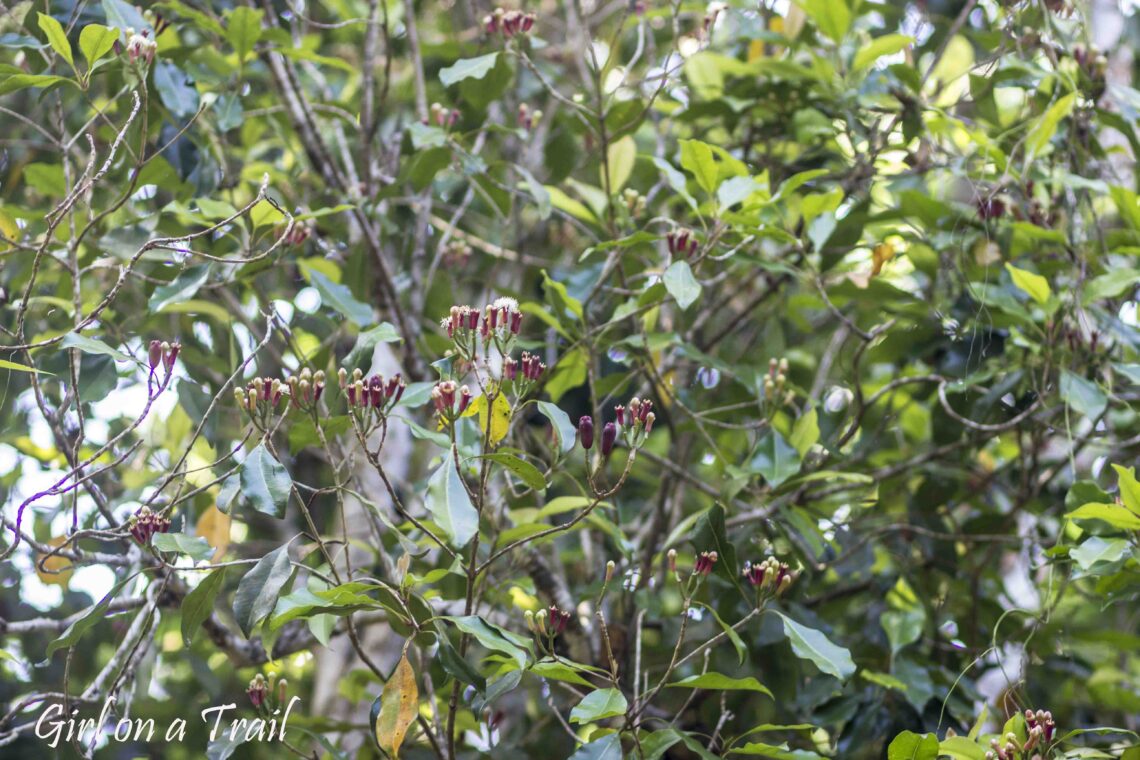
Zanzibar – The Spice Islands and Cloves Smuggling
The Zanzibar islands are known as the Spice Islands and have long been a centre of spice production. The most popular spices include cloves, nutmeg, cinnamon, and pepper. The best way to learn about the rich history of these crops is to visit a local spice farm. Spice farms in Zanzibar are not typical vast plantations where a single type of plant stretches to the horizon. Instead, they have a demonstrative character, with a variety of plants and fruit grown on a relatively small area. This allows visitors to see the diversity of Zanzibar in a relatively short time. There are many offers for the so-called Spice Tour; I visited the Kizimbani farm. I did this accidentally while exploring the island. It was only later that I found out it’s a government company, engaged in the production and export of spices and agricultural training. I was greeted by a local guide who spoke fluent English and had extensive knowledge about spices. He showed me plants and trees that I did not recognize at all, and being as green as grass in the subject, I tried to pretend that I knew a little about cooking 😉 The first tree with round fruits turned out to be nutmeg, known in Swahili as kungu manga. Besides its culinary value, this spice is also famous for other properties. In larger quantities, it can have mild hallucinogenic effects. It is also known as an aphrodisiac and is used to calm and lull children to sleep.

The turmeric root also didn’t look familiar to me, as I mainly knew this spice in the form of yellow powder. Meanwhile, turmeric, also known as the saffron for the poor, looks similar to ginger, with the only difference – intense orange colour. The yellow powder is obtained by drying and grinding the previously boiled roots. In Zanzibar, turmeric is also used to treat indigestion.

Pepper – here I had no doubts, I immediately recognized the plant being presented to me. However, when I was asked about the different types of pepper, that was where my knowledge ended. I was convinced that red, green, black, and white pepper were different varieties of this plant. It turns out that all these types are the same variety. Red pepper comes from the most mature berries, which are soaked in water to remove their shells. They obtain their red colour by being dried in the sun. To get green pepper, the immature seeds are dried in the shade to maintain their intense green color and then soaked in brine. Black pepper is made from unripe berries that undergo a drying and fermentation process. White pepper is produced from ripe berries that are soaked to remove their skins.

Lemongrass was easier to recognize by its characteristic stalks. After crushing them in my hand, I had no doubts. The distinctive smell was typical of this plant. Interestingly, the fresh aroma of lemongrass effectively repels mosquitoes. Besides its culinary properties, lemongrass is also used as an ingredient in cosmetics.

The guide’s question about the tree bark immediately brought the answer to mind. Of course, it was cinnamon. In Zanzibar, cinnamon is called the king of spices. The entire tree is utilized. Ground bark or bark rolled into sticks, which we know as cinnamon sticks, is used in many dishes and desserts. Cinnamon also has antibacterial and disinfectant properties. While the bark tastes like cinnamon, the root has a fresh, menthol scent. From the roots and leaves, a substance that resembles Amol in both properties and scent is produced. It is used similarly, as it warms the skin and has antibacterial effects when rubbed in.

Finally, it was time for the cloves. When I saw the clove tree, I had no doubts. The immature buds on the tree resembled the shape of dried cloves. They are picked from the tree when four characteristic protrusions appear at their tips, and then they are dried in the sun. Zanzibar was once the main exporter of cloves. The trees were brought to the islands in the first half of the 19th century by Arabs from Oman. Spice cultivation was a very profitable business at the time, especially because the Omanis had access to large supplies of cheap labour. At that time, the island thrived on the slave trade. However, in the 1970s, the production of this spice drastically declined due to high competition in the international market and a failed attempt to introduce a socialist economy. In the 1960s and 70s, the government took control of the prices and export of this spice. Artificially lowered prices have made clove production less profitable. Nevertheless, the government doesn’t want to relinquish control over their production, arguing that cloves are a national treasure. Imagine that clove prices are so low that they are smuggled to Kenya in desperation! Smugglers can sell them there for a much higher price. There’s another negative aspect of clove cultivation. To reduce production costs, children are used as cheap labour. Children are more agile and efficient at picking the undeveloped buds from the tree crowns. As one might expect, many of them have accidents, falling from the high branches. Although child labour is illegal in Zanzibar, the government is powerless in this case. Children are often used to help their parents on the plantations.

The guide shows me another plant with characteristic tall leafy stalks. However, I have no illusions—I stand no chance in a world spice knowledge contest. The plant presented looks unfamiliar to me. It turns out to be cardamom, which is apparently the second most expensive spice in the world after saffron. I try to justify my ignorance by pointing out to the guide that I am very familiar with this spice in the form of seeds or powder. However, I cannot see any seeds here. The guide reveals the stalks, and the mystery is solved. Cardamom seeds are found at the base of the plant in the form of bulbous rhizomes.

At the spice farm, you can also observe the cultivation of various fruit like coconuts, pineapples, and the less familiar jackfruit. Jackfruit is very sweet and can grow to enormous sizes, weighing up to 30 kilograms. Besides its delicious fruit, the jackfruit tree produces a substance that can be used as a glue. This substance is obtained by cutting the bark.

Of course, an essential part of the tour was also tasting fruit and presentation of the local products offered by the farm. You can buy spices there. The prices are slightly higher than at the Darajani Market in Stone Town, but the products appear fresher and of better quality at first glance. Additionally, they offered coffee, tea, various oils, perfumes, and soaps.

The Spice Tour is a fascinating addition to visit in Zanzibar. The cost of an individual tour is only $5 (in 2023). During the visit, you can learn a lot about famous spices and their various uses. It’s also a great way to gain a closer understanding of the island and the lives of its inhabitants.



